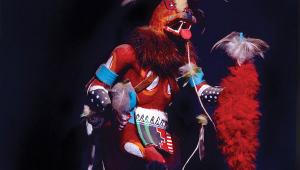Framing Techniques
Doorways are among the most common framing devices. Here, both color and shape help frame the two cowgirls and their pal. |
With a bit of careful observation, it's easy to utilize overhanging branches, archways, rock formations, architectural elements--even the window of your car--to frame your scene and turn a mediocre image into a dynamic one. Found objects can often be strategically arranged so that they work to your compositional advantage.
When selecting a framing device for your scene you should consider shape, color and texture. Frames that contrast sharply with the objects they enclose can be very effective. Square or rectangular frames tend to be more passive, while curved shapes are more dynamic and can lend a feeling of motion to your photograph.
 |
|
|
As with many graphic devices, framing elements are often most effective when used with restraint. The idea is to direct the viewer's attention to the primary subject of your scene. A framing device that is excessively large, colorful or bright can overwhelm the image and ruin the effect. Used properly, framing devices can add an artistic effect without the viewer even being conscious of their presence.
 |
|
|












































